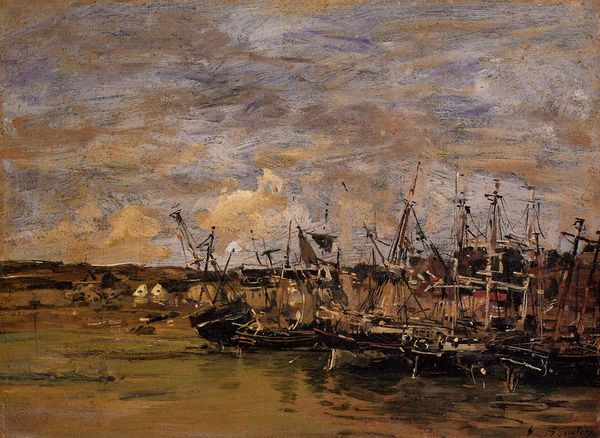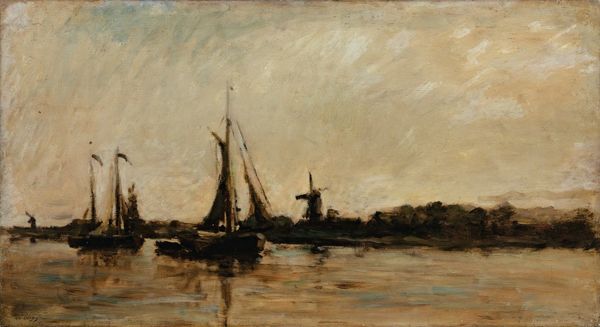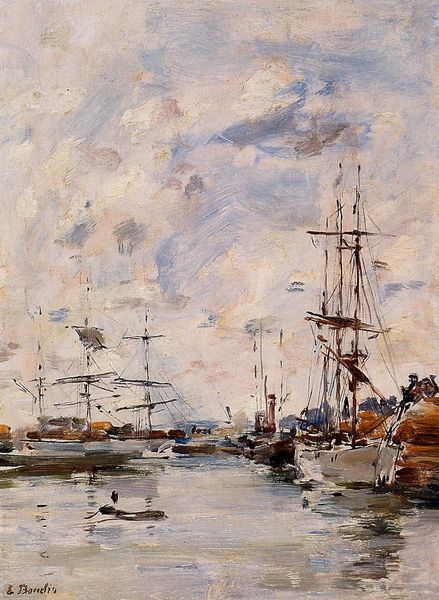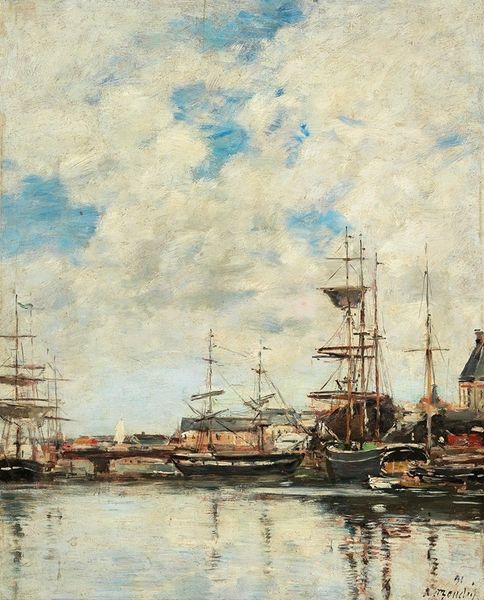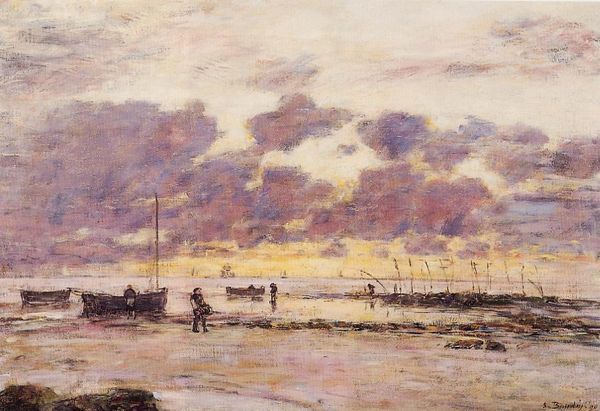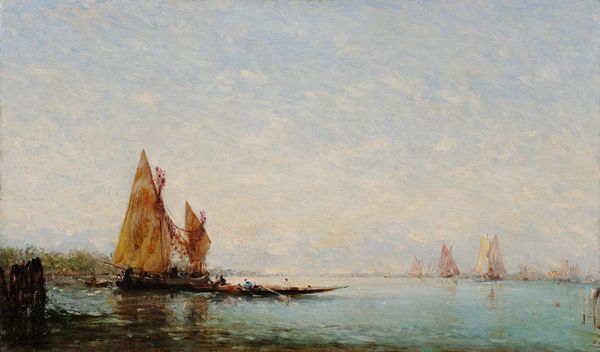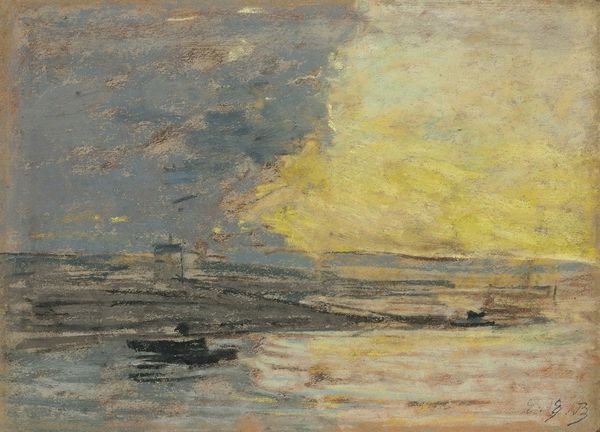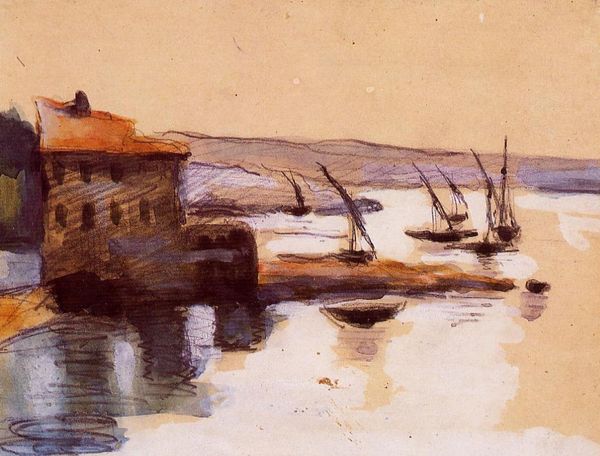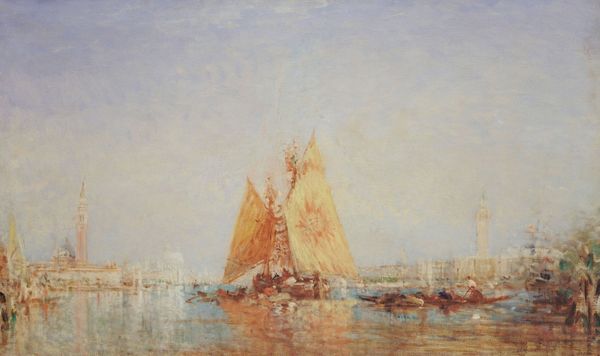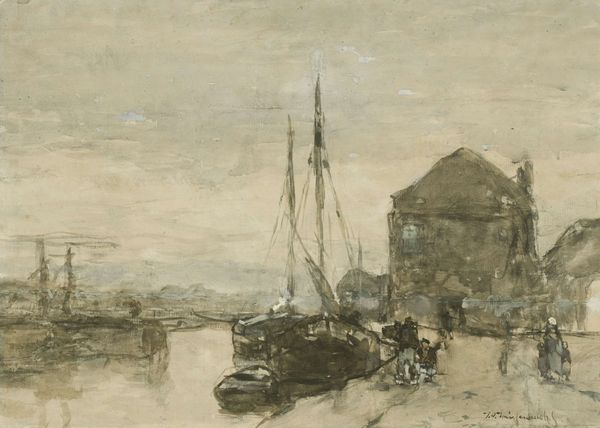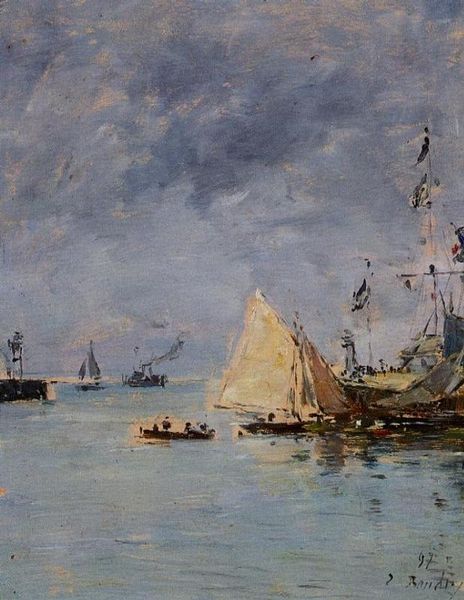
painting, plein-air, oil-paint
#
boat
#
ship
#
painting
#
impressionism
#
plein-air
#
oil-paint
#
vehicle
#
landscape
#
impressionist landscape
#
oil painting
#
seascape
#
water
Copyright: Public domain
Editor: This is "Berck: Low Tide" by Eugène Boudin, an oil painting that definitely captures that Impressionistic, plein-air feel. The scene is of boats sitting in the shallows with such soft colors; it almost looks like everything is made of light and water. What stands out to you in terms of its historical significance or the statement it tries to make? Curator: Well, paintings like this really speak to the changing dynamics of coastal life in 19th century France and the role that art played in shaping perceptions of it. These weren't just pretty pictures; they were participating in a broader discussion about labor, leisure, and the industrial transformation of these regions. Consider the rise of seaside tourism during this period. How do you think an image like this may romanticize or even ignore the realities of the working people in these coastal communities? Editor: That's an interesting angle! I hadn’t considered that romanticizing aspect. I was drawn in by the beautiful, shimmering light but thinking about it, you don't really see the fishermen or laborers, just the boats at rest. Curator: Exactly! Boudin's work is deeply enmeshed with the public perception of the sea and its cultural role, consciously or not. By focusing on the aesthetic qualities—light, color—he presents a very particular experience, almost carefully curated for consumption. These images influence how we view those spaces. Do you see the broader implications here in terms of historical record? Editor: I think I do. It makes me think about whose stories are told and *how* they're told. That visual absence of working people is itself a statement about power, privilege, and perception. Curator: Precisely. Looking closely at even what appears to be a simple landscape painting reveals these layers of social and cultural commentary, influencing how we understand our history and visual culture. Editor: Thanks. This has really broadened my view on landscape painting beyond just pretty scenes. I will definitely keep your observations in mind as I study art history further. Curator: Likewise. Your observation of initial visual impression as potentially glossing over deeper implications of this imagery highlights how vital our dialogue as curators, editors, and art enthusiasts can be in deciphering artwork significance.
Comments
No comments
Be the first to comment and join the conversation on the ultimate creative platform.
